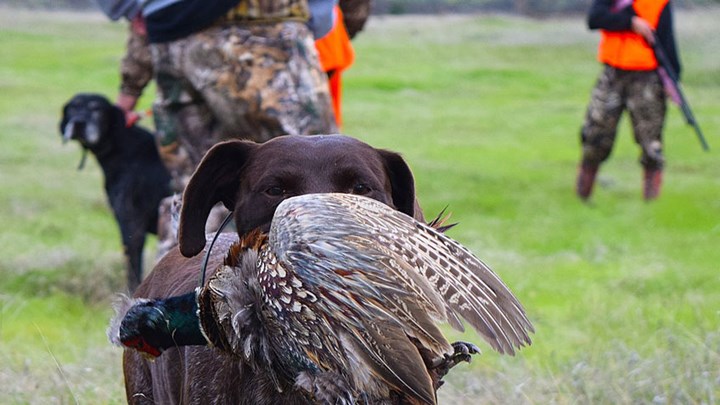
by Chris Chaffin - Sunday, July 14, 2019

Partnerships have long been recognized in the outdoor industry as a strong tool for supporting and promoting both conservation and hunting. The list of organizations, agencies, clubs and associations that have worked together to assure their success is long and varied, ranging from small, local efforts to huge, international campaigns.
Tackling the subject of partnerships at the 2018 National R3 Symposium, which aimed at recruiting, retaining and reactivating hunters, the gathering reconfirmed that the future of the R3 movement “…depends on the collective effort of the conservation community.” It was noted that strategic partnerships will decidedly elevate the impact of R3 efforts.
Symposium attendees indicated they utilize partnerships to pursue R3 objectives. But, just how involved and how effective are those partnership efforts and do they demonstrate a good return on the investment of budget and manpower?
Surveys revealed that just under half (48.5 percent) felt their partnerships did, indeed, generate more “return” than the effort to arrange them. Slightly more than half felt these partnership efforts were good or excellent. In roundtable discussions, examples of productive partnership efforts included “learn to hunt” programs with non-governmental organizations (NGOs), NGO volunteers supporting state agency programs and NGO funding for kids’ scholarships to attend outdoor camps, among other programs.
A long and varied list of successful partnership programs were identified, including:
Most readers will recall it wasn’t long ago that many, if not most, state agencies held the belief that recruitment of new hunters was not their “job.” Which makes us ask, “Just how well have the agencies now defined their role in the R3 arena?”
According to survey responses at the symposium, “91 respondents (66.3 percent) felt their organization had defined its role in R3 to a fair or great degree. [But] “…nearly four in 10 felt their organization has identified its role in R3 only some, a little or not at all.”
Clearly, the majority of states are working actively on R3 efforts, but just as clear is a need for partners and resources to grow the programs.
Here are some of the needs respondents identified:
What, specifically, is needed in an R3 partnership? Author’s Note: With some 45 years of partnership experience in the outdoor industry and community, I believe the first thing potential partners need to do, after recognizing there is an opportunity to work together on a mutually agreeable objective, is to firmly embrace the fact that partnerships are a two-way street. Both parties have missions, goals, needs, budgets and resources. Partnerships must deliver a good return on investment for BOTH parties. The second thing is to start an honest and candid dialog that firmly establishes what each party’s expectations are from the partnership. The more “measurable” the expectations, the better. Continually revisiting those expectations is vital to the partnership’s success.
The symposium attendees indicated the following were needed from partnerships:
Of the respondents, 113 or 70.6 percent, felt their organization was reasonably or extremely well equipped to pursue R3 partnerships.
Recognizing that their potential partners would have needs, they offered the following as components they could bring to the table:
Generally, the need for developing effective partnerships has been established. So what obstacles are preventing agencies and others from seeking new R3 partnerships? Time was listed most frequently as the obstacle preventing partnerships, followed by “other,” then contacts, understanding and money. In the “other” responses, leadership and management were cited as the top concerns.
Also included were a mixture of challenges ranging from a lack of priority to active resistance, such as:
Obviously, seeking out and building partnerships is replete with challenges—for both sides of the partnership equation. But, as stated at the beginning of this article “…the future of the R3 movement …depends on the collective effort of the conservation community.”
So, big challenges…but also big opportunities. IMPORTANT opportunities!
Perhaps, the most important “message” in this article is the potential for you, the reader, your friends, your business associates or partners, your family or your sportsmen’s club to identify an idea, a resource or a “bridge” to help initiate a partnership to help recruit, retain or reactivate a hunter. If an idea or opportunity comes to you, act on it. It’s going to take all of us to make a difference in our hunting and conservation future.
Lead Image: The Sacramento River Bend Annual Pheasant Hunt brings together the Bureau of Land Management Redding Field Office, the California Department of Fish and Wildlife and the Shasta County Sportsman’s Association to provide a hunting opportunity for youth and women. Each year, hunters are able to learn safe hunting techniques while enjoying traditional pheasant hunting.
About the author: Chris Chaffin has been an outdoor communicator, educator and partnership manager for more than 40 years. On the national scene, he has represented several prominent companies in the outdoor community and served two terms as treasurer of the Professional Outdoor Media Association (POMA), eventually taking on the roles of vice-president, president and chairman of the board. In 2007, he launched Chaffin Communications, Inc., a communications consulting company focusing on the outdoors. In 2012, with support from the Outdoor Adventure Dream Giveaway, Chaffin founded and currently manages the Outdoor Adventure Conservation Fund, a Florida non-profit established to encourage and facilitate more people participating in traditional outdoor activities.
Follow NRA Hunters' Leadership Forum on Twitter @HuntersLead.
E-mail your comments/questions about this site to:
[email protected]
Proudly supported by The NRA Foundation and Friends of NRA fundraising.
